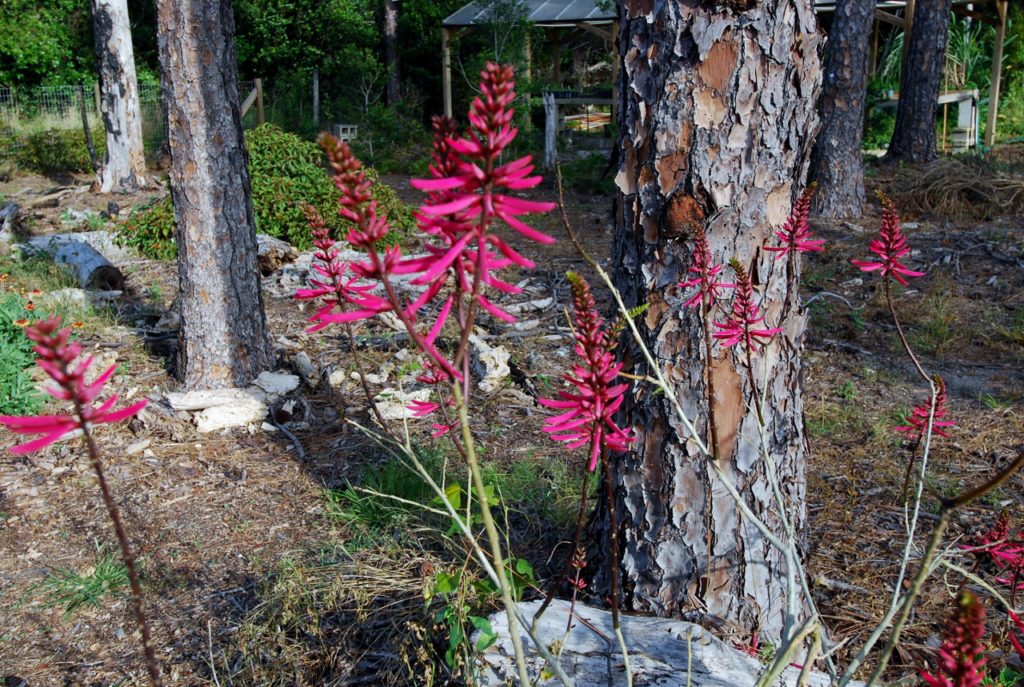
Coralbean
Erythrina herbacea
Coralbean is a member of the bean family with two inch long red tubular flowers in the spring followed by six inch pods with red poisonous seeds inside. It grows normally to eight feet, but can reach 20 or more feet. The branches and trifoliate leaves have curved thorns; fortunately the plant is upright and can be given a moderate amount of space to avoid them. It also makes a good barrier plant.
Found normally in dry pinelands, scrub and coastal dunes from the Keys through the Southeastern US, Coralbean is one of the most drought tolerant plants available. It can tolerate salt air and some salt water flooding, yet I have seen it tolerate fresh waterlogged soils for long periods of time.
Plant this where it can either stand as an accent plant or mix with other plants like Saw Palmetto, Wild Coffee, Firebush, Blackbead, Beautyberry and other plants that will shield the public from the thorns. In northern areas it is frozen to the ground and sends up beautiful red flower spikes in the spring. You can cut the plant to the ground each winter to mimic this effect and keep the plant low. Make sure to remove the developing seed pods if there are children in the area; the seeds, again, are poisonous.
Hummingbirds nectar on the red tubular flowers which makes this a great plant for a hummingbird attracting garden when mixed with Necklacepod, Firebush, Pavonia, Bahama Strongbark, Salvia, and Dicliptera.